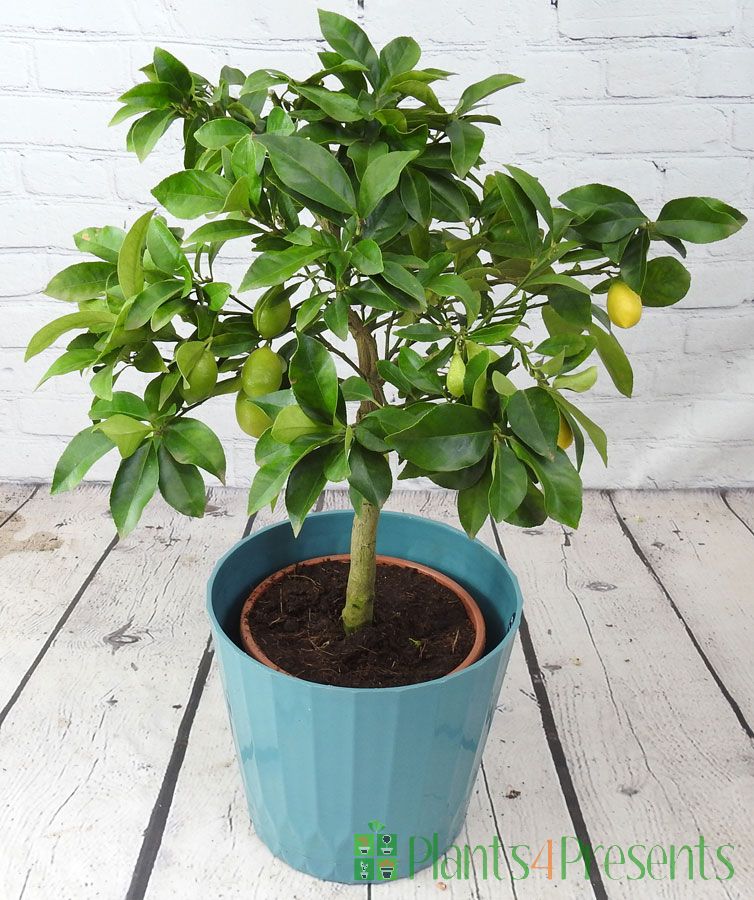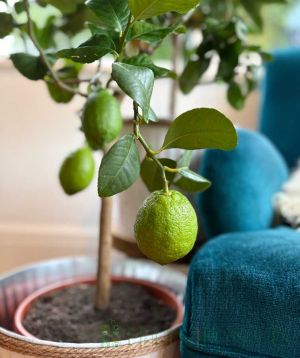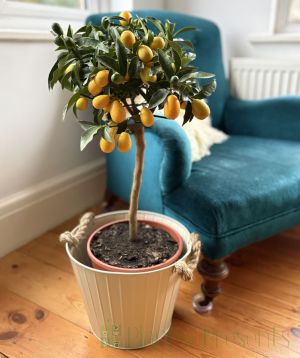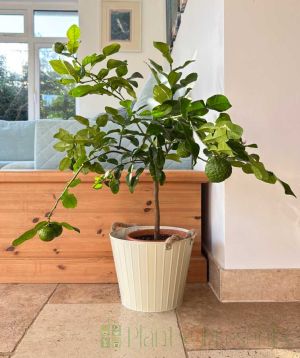Large Limequat Tree
Out of stock


- Unusual cross between a lemon and a kumquat
- Delivered with a ripening crop of tasty fruit
- Order by 3pm for next day delivery
Sorry we don't have any Large Limequats available at the moment, but we do have lots of other lovely citrus plants available for next day delivery.
Good to know: although we take every care when wrapping your plants, ripe or weaker fruits can sometimes get dislodged in transit. They will still taste great in a drink on arrival though!
 5/ 5
8 reviews
5/ 5
8 reviews


Very happy and my sister loved it

I cannot recommend this company enough! 5* customer service. I have been in contact with them for over a year now, ordering plants for centrepieces for my wedding. Michelle has been responsive, and gone above and beyond to keep me updated on the plants and how they were looking. They were incredibly helpful and kind, and the plants arrived in perfect condition. I will definitely be using this company in the future and could not recommend them enough!

Beautiful condition

Already done so.

Unusual and lovely,already had a few fruits on

Looks great and apparently fruits several times a year. Bought for a birthday present, so really handy that it also comes with a hand written card.

Excellent service ..........

Bought as a gift. Recipient was extremely happy with it.

These instructions are sent with the plant gift
This little tree has both tasty fruit and fragrant flowers – sometimes both at once. It is a cross between a lemon and a kumquat, also known as a ‘Limonella’. The fruit is smaller but tastes very similar to a lime with a sweet edible rind and is great for flavouring cooked dishes or slicing in cold drinks.
Citrus trees need lots of light. A conservatory is ideal, but they will also be happy near a window in a cool, bright room. In the summer and autumn, your citrus will thrive outdoors in full sun or partial shade. However, these trees are not hardy and will need to come inside as soon as the outdoor temperatures are near 5 degrees Celsius. When indoors, try to keep your plant away from cold draughts and any heating source.
Citrus are best kept in small pots here in the UK, they will need to be monitored regularly to check when the topsoil is dry. It is best not to have them on a routine water and let them tell you when they are next ready for a drink. When the topsoil is bone dry, remove the pot from the outer pot cover. Water thoroughly from the top until excess water drains right through the pot and out of the bottom and never leave your plant sitting in water. Sometimes if the soil is very compact this may take several waterings and is easiest to do in a kitchen sink. In the winter you should expect to water thoroughly still, making sure to soak the soil, but you might only need to do this once from anything between 1 to 4 weeks, depending on how quickly the soil dries out. In the summer months you may need to water every other day, but do not stand your plant in water. Don't worry if the soil feels dry between waterings, but if the leaves start to droop or curl you know it is thirsty, so water straight away. If you are having gradual leaf drop where you have a few leaves falling off each day, your plant is being overwatered.
In the summer, citrus trees will benefit from summer citrus feed every week to encourage growth, We use our Summer citrus fertiliser from March until the end of September. Through winter, from October until the end of February, we use the winter citrus fertiliser every time we water.
Citrus grow quite slowly; if you need to, repot in the spring only going up 1 pot size using a fast-draining compost suitable for container plants. As a general rule, citrus tend to produce flowers in late spring followed by small green fruits that can take 10 months or more to fully ripen. However, in this country, many varieties don’t follow a strict season and can fruit or flower at any point during the year.
Problem Solving
Citrus trees are not the easiest of plants but they are very rewarding. Look out for signs of trouble and try to treat problems early. The most common problem is leaves dropping due to over or under-watering. If leaves are crisp when they drop, this is due to underwatering; if they are leathery the chances are it has been over-watered. A return to a regular and thorough watering routine should lead to recovery.
If new growth is very light in colour or has mottled markings your plant may be lacking trace elements. A good dose of citrus feed should soon green up the leaves.
Our citrus trees are grown in a pesticide-free environment. In the unlikely event that you find pests, e.g. aphids, these can be removed by hand or with a soap and water spray. Check our recommended organic plant pest treatment for other pests here
We also have several pages and a video on more detailed citrus care here












